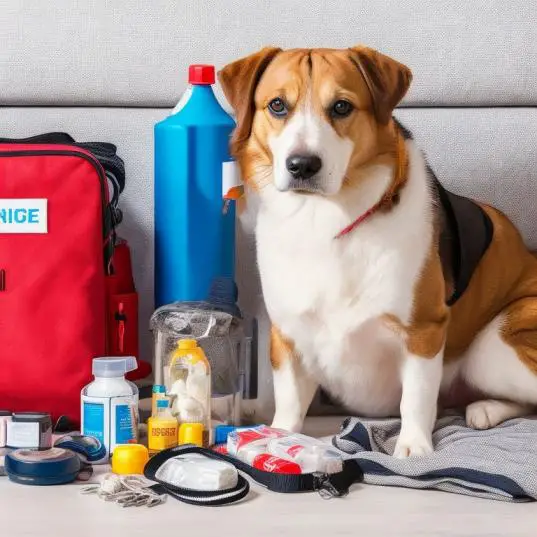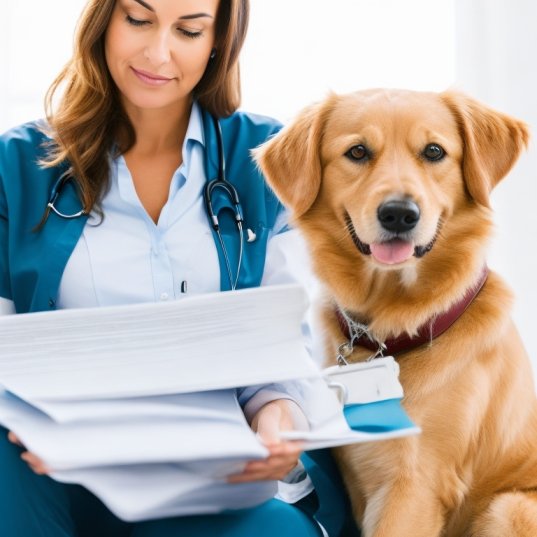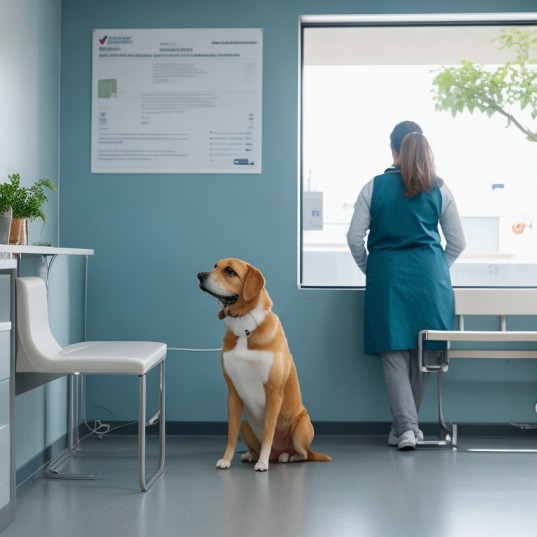Owning a pet brings joy and responsibilities, including unexpected healthcare costs. Our comprehensive guide, “Top Tips for Filing Successful Pet Insurance Claims,” unveils essential strategies to help you confidently navigate the process of filing pet insurance claims. From selecting the right policy to documenting incidents, these expert tips ensure your furry companion receives the care they need while keeping your finances in check. Join us as we delve into the art of securing successful pet insurance claims.
Choose the Right Policy
Selecting the right pet insurance policy is a crucial step towards ensuring a smooth and successful claims process. Pet insurance policies come in various shapes and sizes, and finding the one that aligns with your pet’s needs and your financial situation is paramount. Let’s delve into the key considerations when choosing the right policy.
1. Evaluate Your Pet’s Needs

Start by assessing your pet’s age, breed, size, and any pre-existing conditions. Different pets have different healthcare requirements, and these factors can influence the type of coverage you need. For example, older pets might need more comprehensive coverage for potential age-related issues, while younger pets might benefit from accident-focused plans.
2. Consider Coverage Options
Pet insurance policies typically offer a range of coverage options. These can include accidents, illnesses, hereditary conditions, and even routine care like vaccinations and dental cleanings. Evaluate what matters most to you and your pet’s overall well-being. Consider the potential costs of treatments and procedures to help you decide on the level of coverage that suits your needs.
3. Examine Coverage Limits and Deductibles
Coverage limits are the maximum amounts the insurance company will reimburse for specific treatments or conditions. Deductibles are the amounts you’re responsible for paying before the insurance coverage kicks in. Balance these factors carefully – a lower deductible might mean higher monthly premiums, while a higher deductible could lead to more out-of-pocket costs for individual claims.
4. Reimbursement Percentage
Different policies offer varying reimbursement percentages. The reimbursement percentage dictates how much of the eligible expenses the insurance company will cover after the deductible. Common reimbursement percentages range from 70% to 90%. Consider your financial situation and willingness to pay a portion of the costs out of pocket when deciding on a reimbursement percentage.
5. Exclusions and Waiting Periods
Carefully review the policy’s list of exclusions, which are conditions or treatments not covered by the insurance. Some policies might have waiting periods before specific conditions are covered. Understanding these exclusions and waiting periods can prevent unexpected denials and ensure you’re fully informed about what’s covered from day one.
6. Research the Insurer

Investigate the reputation and financial stability of the insurance company. Look for reviews, ratings, and feedback from current policyholders. A reliable and reputable insurer will not only provide comprehensive coverage but also a smooth and hassle-free claims process when you need it most.
7. Compare Policies
Don’t settle for the first policy you come across. Take the time to compare different policies from multiple insurers. Use comparison tools and websites to compare coverage options, premium costs, deductibles, and other features. This research can help you make an informed decision that aligns with your pet’s needs and your budget.
8. Seek Professional Advice
If you’re unsure about which policy to choose, consider consulting with a veterinarian or a pet insurance specialist. They can offer insights based on their experience and knowledge of various policies. Their advice can help you navigate the complexities of pet insurance and make an informed choice.
Choosing the right pet insurance policy is a significant decision that can impact your pet’s health and your financial well-being. By carefully evaluating your pet’s needs, coverage options, limits, deductibles, and seeking expert advice, you can find a policy that provides the protection your furry friend deserves. Remember, a well-chosen policy offers peace of mind, ensuring that your pet’s health remains a top priority.
Understand Your Policy Coverage
A key aspect of ensuring a successful pet insurance claims experience is having a comprehensive understanding of your policy’s coverage. By familiarizing yourself with what is and isn’t covered, you can navigate the claims process confidently and avoid unexpected surprises. Let’s explore the crucial elements of understanding your pet insurance coverage.
1. Know the Covered Conditions
Pet insurance policies outline the medical conditions and treatments that are eligible for coverage. These can include accidents, illnesses, surgeries, hospitalizations, and more. Take the time to review the policy documentation thoroughly to ensure you’re aware of what your pet is protected against.
2. Familiarize Yourself with Exclusions
Exclusions are conditions, treatments, or circumstances that the insurance policy does not cover. These can range from pre-existing conditions to specific high-risk activities. It’s essential to understand these exclusions as they directly impact the types of claims that may be denied. This knowledge helps you make informed decisions for your pet’s care.
3. Review Limitations and Caps

Coverage limits and caps are the maximum amounts the insurance company will pay for specific treatments or conditions. Some policies have per-incident limits, annual limits, or lifetime limits. These limitations can influence your financial planning for your pet’s healthcare, so make sure you’re aware of them and choose a policy that aligns with your expectations.
4. Consider Wellness and Routine Care Coverage
While many pet insurance policies focus on accidents and illnesses, some also offer coverage for routine care expenses such as vaccinations, dental cleanings, and wellness exams. If these routine expenses are a priority for you, opt for a policy that includes this coverage, as it can contribute to your pet’s overall health and well-being.
5. Note Waiting Periods
Waiting periods are the durations during which specific conditions are not covered after purchasing a policy. These waiting periods vary among insurers and may apply to different types of conditions. Understand these waiting periods, as they can impact your ability to file certain claims shortly after acquiring coverage.
6. Pre-Existing Conditions
Most pet insurance policies exclude coverage for pre-existing conditions. These are medical issues that your pet had before the policy’s effective date. Be transparent with the insurer about your pet’s medical history to avoid claim denials related to pre-existing conditions.
7. Chronic and Hereditary Conditions
Chronic and hereditary conditions might require ongoing treatments and care. Some policies cover these conditions, while others might have specific requirements or limitations. If your pet is prone to these types of conditions, ensure that your chosen policy offers adequate coverage.
8. Emergency and Specialist Care

Consider the coverage provided for emergency care and visits to specialists. Some policies may have limitations on coverage for after-hours emergency care or consultations with veterinary specialists. Knowing how these scenarios are covered can be crucial in emergency situations.
9. Prescription Medications
Understand how prescription medications are covered by your policy. Some policies include coverage for prescription drugs, while others might offer it as an add-on. Since medications are often a significant part of veterinary care, clarity on this aspect is vital.
10. Coverage Territory
Check whether your policy covers veterinary care outside your home country or within specific geographical limits. If you frequently travel with your pet or reside in multiple locations, ensure that your policy’s coverage territory aligns with your lifestyle.
Understanding your pet insurance policy’s coverage details is fundamental to maximizing its benefits. By knowing what is covered, what isn’t, and any limitations, you can make informed decisions about your pet’s care and be prepared to navigate the claims process when the need arises. Remember, a clear understanding of coverage can lead to a smoother and more successful experience with your pet insurance policy.
Read More-
- Money-Saving Tips for Finding the Best Pet Insurance for Your Budget
- The Benefits of Lifetime Pet Insurance Policies
Keep Detailed Records
Maintaining thorough and well-organized records is a critical step in ensuring a successful pet insurance claims process. Clear and accurate documentation not only streamlines the filing process but also provides essential evidence to support your claims. Let’s delve into the importance of keeping detailed records and how to effectively manage this aspect of your pet’s healthcare.
1. Medical History Documentation

Begin by gathering and documenting your pet’s complete medical history. This includes vaccination records, past illnesses, surgeries, and any ongoing medical conditions. Having a comprehensive medical history readily available ensures that you can provide accurate information to the insurer when filing a claim.
2. Vet Visit Records
Keep records of all veterinary visits, including dates, reasons for the visit, diagnoses, treatments administered, and any prescribed medications. These records serve as a timeline of your pet’s health journey and can be invaluable when filing claims related to specific medical events.
3. Invoices and Receipts
Organize and retain copies of invoices and receipts for veterinary services, treatments, medications, surgeries, and any other expenses related to your pet’s care. These documents provide concrete evidence of the costs you’ve incurred and are essential for reimbursement claims.
4. Prescription Details
If your pet requires prescription medications, maintain records of the prescriptions, including the name of the medication, dosage instructions, and the prescribing veterinarian’s contact information. This information may be requested by the insurance company to verify the necessity of the medication.
5. Diagnostic Reports
Keep copies of any diagnostic reports, such as X-rays, blood test results, and ultrasound reports. These reports provide objective evidence of your pet’s medical condition and are crucial for validating the need for specific treatments or procedures.
6. Photographic Evidence

Photographs can provide visual documentation of your pet’s health conditions, injuries, and recovery progress. Take clear and well-lit photos when incidents occur, and include them in your records. Visual evidence can strengthen your claim and help the insurance company understand the situation better.
7. Communication Records
If you’ve had discussions with your veterinarian or the insurance company regarding your pet’s condition or claims, keep a record of these communications. This includes emails, notes from phone calls, and any written correspondence. These records can clarify details and ensure accurate information exchange.
8. Digital or Physical Organization
Choose an organizational method that works best for you—whether it’s digital or physical. Digital options include using cloud storage, dedicated apps, or email folders. For physical organization, a dedicated file or binder for your pet’s records can be useful. Regularly update and maintain your chosen system.
9. Emergency Contact Information
Keep a list of emergency contact information for your veterinarian, specialists, and the insurance company. Having this information readily accessible can be crucial in urgent situations when you need to quickly access medical records or discuss potential claims.
10. Regular Updates
As your pet’s health situation evolves, ensure that your records remain current. Regularly update medical history, treatment records, and any changes to contact information. This proactive approach streamlines the claims process and ensures accurate information submission.
By meticulously organizing and maintaining detailed records, you lay the foundation for a successful pet insurance claims experience. These records not only facilitate the claims process but also provide a comprehensive overview of your pet’s health journey. Remember, clear and comprehensive documentation demonstrates your pet’s healthcare needs, making it easier for the insurance company to process claims promptly and accurately.
Prompt Veterinary Attention

In the event of illness or injury, seeking prompt veterinary attention is crucial on two fronts. First, it’s essential for your pet’s health and well-being. Second, timely treatment can positively impact your insurance claim. Insurance companies often require that treatment be initiated promptly to ensure coverage, so don’t delay in seeking medical care for your furry friend.
Properly Document Incidents
Effective documentation of incidents is a pivotal aspect of filing successful pet insurance claims. Whether it’s an unexpected injury, accident, or sudden illness, proper documentation ensures that you have the necessary evidence to support your claim. Let’s explore the importance of documenting incidents accurately and how to go about it.
1. Gather Immediate Information
When an incident occurs, gather information promptly. Note the date, time, and location of the event. If there were any witnesses, collect their contact information as well. This immediate information establishes the context for your claim.
2. Photographic Evidence
Photographs are invaluable when it comes to documenting incidents. Capture clear and detailed images of your pet’s injuries, the scene of the accident, or any visible symptoms of illness. Multiple angles can provide a comprehensive view of the situation.
3. Capture Video, if Applicable
In certain situations, a video recording can offer a more comprehensive view of the incident. Videos can capture your pet’s behavior, reactions, and any relevant details that might not be fully captured in photographs alone.
4. Write a Detailed Description
Accompany your visual evidence with a written description of the incident. Explain what happened, how it occurred, and any immediate actions you took. Include any observations about your pet’s behavior, reactions, or changes in condition.
5. Include Medical Treatment Details
If the incident led to a visit to the veterinarian or required medical attention, document these details. Note the treatments administered, medications prescribed, and any recommended follow-up care. This medical documentation reinforces the severity of the incident and the necessary treatments.
6. Chronicle Recovery Progress

If your pet requires ongoing treatment or rehabilitation following the incident, document their recovery progress. Regularly record changes in their condition, improvements, setbacks, and any adjustments made to their care plan.
7. Maintain a Timeline
Create a chronological timeline of the incident, including all relevant details from the moment it occurred to the resolution. This timeline provides a structured overview that can be especially useful when discussing the incident with the insurance company.
8. File Incident Reports
If the incident occurred at a location such as a dog park or a boarding facility, consider filing an incident report if applicable. These reports can provide an additional layer of documentation from an independent source.
9. Communication Records
If you communicated with your veterinarian or other professionals about the incident, keep records of these interactions. Notes from phone calls, emails, or in-person discussions can help substantiate your account of the incident.
10. Maintain a Dedicated Folder
Create a dedicated folder (physical or digital) for each incident. This folder should contain all related documents, photographs, videos, and communication records. Having a centralized location for incident documentation streamlines the claims process.
Properly documenting incidents is not only about capturing visual evidence but also about providing a comprehensive account of the event and its aftermath. Accurate and thorough documentation strengthens your claims by offering a clear picture of your pet’s health journey. Remember, the more comprehensive your documentation, the smoother your interactions with the insurance company will be, ultimately leading to a successful claims process.
Adhere to Submission Guidelines
Each pet insurance company has specific claim submission guidelines. It’s crucial to adhere to these guidelines to streamline the claims process. Follow the instructions provided by your insurer, complete any required forms accurately, and include all necessary supporting documentation. This attention to detail can prevent unnecessary delays.
Be Patient and Persistent

The claims process might not always be instantaneous. Be prepared for potential delays and exercise patience. If you encounter any issues or experience delays, don’t hesitate to reach out to the insurance company for updates. Persistence can help keep your claim on track and ensure that your pet’s needs are met.
Review Reimbursement Details
Understanding the reimbursement process is a crucial aspect of navigating pet insurance claims successfully. The way in which your policy handles reimbursements can significantly impact your out-of-pocket expenses and the overall value you receive from your insurance coverage. Let’s dive into the key points to consider when reviewing reimbursement details.
1. Reimbursement Percentage
One of the fundamental aspects of reimbursement is the percentage the insurance company will cover. This percentage typically ranges from 70% to 90%. If, for instance, your policy has an 80% reimbursement rate, the insurer will cover 80% of eligible expenses, and you’ll be responsible for the remaining 20%.
2. Actual Cost vs. Benefit Schedule
Different policies use varying methods to calculate reimbursements. Some policies reimburse based on the actual cost of the veterinary service or treatment. Others use a predetermined benefit schedule that outlines the maximum amount they’ll reimburse for specific treatments. Understanding which method your policy employs is essential for managing expectations.
3. Preauthorization Requirements
Certain procedures or treatments may require preauthorization from the insurance company before they’re performed. Be aware of any preauthorization requirements and the process for obtaining approval. Failure to secure preauthorization could result in claim denials.
4. Out-of-Pocket Expenses
Even with insurance coverage, you’ll likely have to pay for expenses upfront and then seek reimbursement. Understand the timeline for reimbursement processing and ensure you’re financially prepared to cover the initial costs.
5. Claim Submission Procedures
Familiarize yourself with the procedures for submitting a claim. This includes required forms, supporting documentation, and any specific instructions. Adhering to the proper submission guidelines reduces the likelihood of claim processing delays.
6. Claim Processing Timeframes

Be aware of the average processing time for claims with your insurance provider. Knowing how long it usually takes for claims to be reviewed and reimbursed can help you plan accordingly and avoid unnecessary anxiety.
7. Currency and Payment Method
If you’re traveling with your pet or seeking treatment abroad, understand how the insurance company handles reimbursements in different currencies. Additionally, clarify the payment methods they offer for reimbursements.
8. Annual Deductibles
Remember that your annual deductible resets every year. Be mindful of this when timing veterinary visits or procedures to maximize your coverage. A clear understanding of when your deductible resets can help you optimize your insurance benefits.
9. Documenting Expenses
Keep meticulous records of all expenses related to your pet’s healthcare. This includes invoices, receipts, and any other relevant documentation. Accurate documentation is essential for submitting claims and ensuring you receive the appropriate reimbursement.
10. Customer Support for Top Tips for Filing Successful Pet Insurance Claims
In case you have questions about the reimbursement process or need assistance with a claim, know how to contact the insurance company’s customer support. Having access to reliable customer service can be invaluable when navigating the claims process.
Understanding how reimbursement works under your pet insurance policy is essential for effective financial planning and managing your pet’s healthcare expenses. By reviewing these reimbursement details, you can make informed decisions about your pet’s care and confidently navigate the claims process. Remember, a clear understanding of reimbursement procedures contributes to a successful and stress-free experience with pet insurance claims.
FAQs (Frequently Asked Questions)
Q1: Why is pet insurance important?
Pet insurance covers unexpected veterinary expenses, ensuring your pet’s health without straining your finances.
Q2: What are the top tips for successful claims?
Our guide covers key tips, including choosing the right policy, understanding coverage, proper documentation, and more.
Q3: How do I choose the right policy?
Evaluate your pet’s needs, consider coverage options, review deductibles, and research insurers to find the best fit.
Q4: What’s essential in understanding policy coverage?
Know covered conditions, exclusions, coverage limits, waiting periods, and coverage for routine care.
Q5: How does proper documentation help?
Detailed records of medical history, vet visits, expenses, and incidents provide evidence to support your claims.
Q6: How do I document incidents effectively?
Gather immediate information, take photos or videos, write detailed descriptions, and maintain a chronological timeline.
Q7: What should I review about reimbursement?
Understand reimbursement percentage, actual cost vs. benefit schedule, preauthorization, and annual deductibles.
Q8: What’s the significance of reviewing claim submission procedures?
Properly adhering to claim submission guidelines ensures a smooth and timely claims process.
Q9: How can I manage expenses before reimbursement?
Be prepared to pay for expenses upfront and familiarize yourself with the reimbursement processing timeline.
Q10: Why is customer support important in this process?
Reliable customer support helps address queries, resolve issues, and ensure a seamless claims experience.
Conclusion
Filing successful pet insurance claims requires a proactive and informed approach. By choosing the right policy, understanding your coverage, keeping meticulous records, seeking prompt veterinary care, documenting incidents, adhering to submission guidelines, and practicing patience, you can navigate the claims process with confidence. Remember, pet insurance is a valuable tool that provides peace of mind, ensuring that your furry companion receives the care they deserve.

